 Facebook
Facebook
 X
X
 Instagram
Instagram
 TikTok
TikTok
 Youtube
Youtube
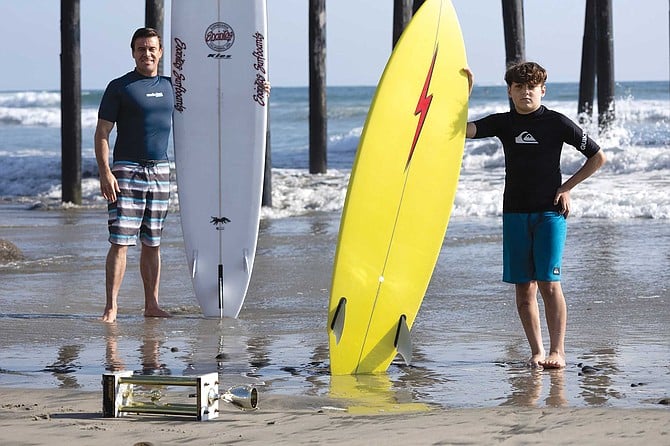
“Whenever some kid tells me they want to become a pro surfer, I suggest they take up a tennis racket.”
— Four-time World Surfing Champion Mark Richards
There are an estimated 17 to 35 million surfers in the world. Roughly 100 of them earn an adult wage riding waves. Many more will try, fail, and end up working outside the surf industry while continuing to surf. Others will settle for the next best thing to surf stardom and secure gigs as clothing reps, surfboard builders, shop employees, surf writers, photographers, bloggers, and vloggers. The lucky ones will continue surfing all their lives. The unlucky ones will turn bitter, quit surfing, and become bartenders in some landlocked place of exile.
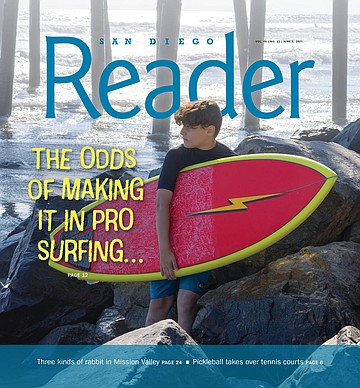
The odds of making it in pro surfing are similar to winning the lotto on a two-buck scratcher. But long odds are what being a young American is all about. Dream big or wake up. The dream is still kicking and screaming in the hearts of grommets (the Australian translation of the word gremmie, which in the U.S. means young surfer) worldwide. Gremmies or grommets,, they are no different than those kids who ditch school to shoot hoops until they can no longer stand, practice electric guitar until their fingers bleed, or camp out on the streets of Hollywood with hopes of “making it.” These dreams are not to be discouraged, but dreamers sometimes need a slap in the face to wake them to the workaday reality they will most likely inherit.
As one of those failed dreamers myself, I suppose I can sound a little bitter. The ever-optimistic former pro and Florida-to-Encinitas transplant Damien Hobgood, however, is not. Damien was once rated fourth globally, sharpening his competitive skills by pushing against his main competitor, his identical twin brother CJ who won the 2001 World Surfing title. According to Damien, “I never really made a lot of money [compared to] what people make in other professions. But for me, it was never about that. I loved surfing, traveling, making lifelong friends. Getting paid was a plus.”
Florida is not known for consistent surf. Even after famed Floridians Kelly Slater and Lisa Anderson took top honors, it defaulted to the impossible dream category. You know how to get to Carnegie Hall. Yeah, practice. According to Damien, “It took a lot to get there, and not everyone succeeded. Still, I continue to encourage kids in their dreams. But no matter how much talent and drive you have, it’s hard to make it as a pro surfer, so you might consider having a backup.”
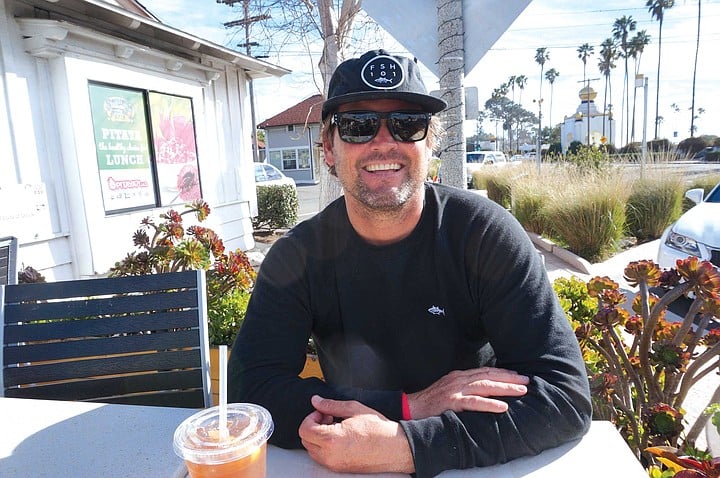
An increasing number of parents and professional surf coaches can be seen training kids from Imperial Beach to Trestles and at surf breaks worldwide. Most of the teachers are good. Few are as good as local surfer Hagan Kelley, a former aspiring pro who pushes his students to surf their best in free surf sessions and contests. These two skills are not always compatible.
Where surfing well requires time in the water, grace under pressure, and natural athletic ability, putting it all together on a two-foot-blown out beach break for 20 minutes necessitates an entirely different mind- and skill- set. Eleven-time World Champion Kelly Slater has mastered both sides of the brain, and is generally still victorious against surfers whose fathers he was beating three decades ago. But for every Slater, there exist thousands of nearly equally talented surfers who fail to score enough points to advance to a local high school final. Fortunately for them, there are other ways of going pro, primarily through product endorsements for surf-based companies.
Professional surfing first arrived without much fanfare in 1977. By the end of that year, Australia’s Peter Townend (PT) was crowned the world champ with a bank account that never budged as he barely covered expenses for the year. That first tour was birthed by 1968 World (amateur) Surfing Champion Fred Hemmings and Hawaiian hot stick Randy Rarick, who joined forces, put everything on the line, and created the International Professional Surfing Association from dust, sweat, and dreams.
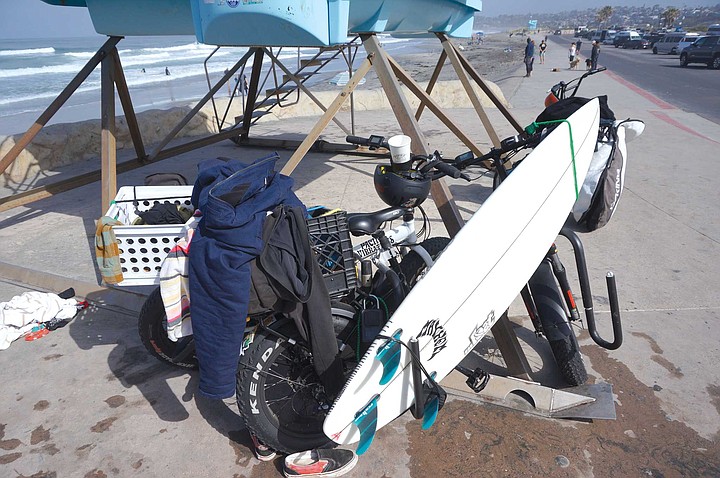
What had forever been a free and easy lifestyle was now a globetrotting, underfunded, cumbersome freak show under a tattered canvas tent. If this sounds harsh, the labor should still be commended, since the perpetrators needed to have beach permits, scaffolding, PA systems, beach marshals, recorders, and a crew of judges. It worked, sort of, as sponsorship trickled in along with prize money equaling that of a major league batboy salary.
The problem is that surfing offers a fantastic feeling that doesn’t always transfer to a non-surfing audience. The activity is nuanced by interference calls, style points, and the waves themselves, which vary in appearance from turquoise waterfalls to... something less than that. The gods play to sudsy dishwater packed with grunt-and-wiggle grovelers trying to earn a buck. It ain’t always pretty. When the picture blurs sufficiently, viewers are ready to rumble and turn to a good old-fashioned blood sport that all good citizens understand.
Seaside Reef in Solana Beach is a hotbed of surfing talent. There you will often find international rising star Alyssa Spencer, World champion longboarder Cori Schumacher, World Champion runner-up Rob Machado, the aforementioned Damien Hobgood, longboard genius Joel Tudor, his apprentice sons Tosh and Judah, generally non-competitor but paid to surf Ryan Burch, up and comers Zach Flores, the Gilchrest kids, and a smattering of others putting on worthwhile clinics.
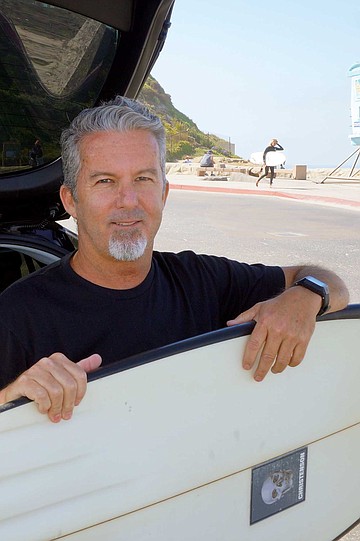
The swells will pass, the great rides, the drops, the turns, the wipeouts, will be gone. Less than a memory, almost a forgotten dream. You won’t really know if they happened at all. But you’ll remember the people. The friends you did it all with. Maybe they were the best you’ll ever have. When it’s all said and done, perhaps the central experience in surfing is friendship.
— Big Wednesday director, John Milius
Rick Irons grew up in a surfing family (his father and uncles were prominent throughout the ’60s, and his cousins, the late World Champion Andy Irons, and his younger brother Bruce are forever ranked among the best surfers in the world.) Rick came of age on the North Shore of Oahu in the ‘80s and did well enough in local contests to consider a career in the then-new sport. Instead, he attended college in Southern California. Eventually, he filled the slot of publisher of Surfer Magazine, where he worked for 14 years. Nobody ever had a better front-row seat to pro surfing than Rick. According to him, “During my time at Surfer, kids and their parents came in convinced their son or daughter was going to be the next big thing. They were all great surfers, but even among that group, less than two percent ever made it. When I look back on all my years as a surfer, I remember a few of the best waves and some contest heats, but I will never forget the friends I surfed them with.” Contests can be fun, but there’s a lot more to surfing. Someone could take their entire family on a trip to Costa Rica for what they spend going to contests every weekend.
“There was no such thing as pro surfing when my dad won the U.S. Championships in 1964, which was one of the biggest contests of that era. I asked him what he won for it, and he pointed to this little wooden trophy and said, ‘That.’”
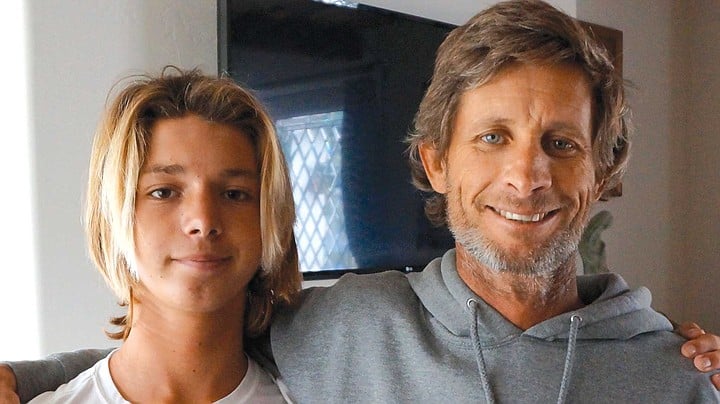
It would take until the ’90s for there to be any real money in surfing, and the big surf brands began paying their team riders as much as a million bucks a year. Currently, very few kids get anything near that type of sponsorship.
According to Irons, “The best decision I ever made was to go to college. I encourage young surfers not to give up on their dreams but not put everything else aside. Don’t miss those opportunities.”
Concerning “little league” parents who try living their dreams through the children, Rick has said, “One famous former pro surfer I know got so into coaching his daughter in contests that he would be screaming. It got so bad that he’s no longer allowed at the contests anymore.”
Jay Grygera is the manager and co-owner of the family-owned and -operated Cardiff Surf Co. According to Jay, “I had a fun time doing contests when I was a kid, but surfing to me is just riding waves and making new friends. My kids are now three and five, and both caught their first waves when they were two. If they grow up and say they’re dropping out of school to be pro surfers, I’ll say, ‘Do it!’ I might change my mind when the time comes — Brixton’s six and Knox is three.”
In the early ’90s, a 14-year-old named Joel Tudor made longboard surfing relevant to the masses by singlehandedly yanking it from the nostalgia vault. Longboarding had basically been dead since the baby-and-bathwater “Shortboard Revolution” of the late ‘60s cut surfboards down from ten to seven feet on average. Joel, who picked up where the ‘60s left off, found his niche by playing classical to the mainstream’s hip-hop, turning the spotlight back to where it had been since the beginning—on style, sweeping turns, and noserides. According to Joel, “My son, Tosh, is 16 now, and he’s in the position I was at his age, where he’s making a little bit of money to travel and to surf. I say a little bit, but Tosh makes what a kid his age would at a regular job. And he’s stayed in school. No matter how good you are, you have to know that if it doesn’t work out, you can do something else. That’s the way I always looked at it and the way my parents looked at it when I was Tosh’s age.
“In shortboard surfing, there’s a clear route to take through contest surfing. In longboarding, there isn’t such a clear path because there are so few contests. I did the contests for a while, but I found that the only ones I really enjoyed were the club contests. I tell Tosh to have fun at it and not to take it too seriously. We go to the club contests together, and they are a blast—more surf culture where you catch up with friends from all over the coast. As with anything, the club contests have some competitors that are better than others. It hardly matters; everyone, regardless of how well they surf, has a great time. With no roadmap for a pro surfer, some parents try creating one. In our house, we don’t even use the words ‘pro surfer.’ We surf, and we have fun at it.
“Most of the guys I competed against when I was young don’t surf anymore. Those who were focused only on winning tended to burn out. You have to be in love with surfing for it to last. My kids and I avoid the ‘non-fun zone.’ Avoiding the contests we don’t want to be in has helped keep up the stoke for Tosh, Judah, and me. Seeing the ‘little league’ parenting thing at places like Seaside and Trestles helped turn me in the opposite direction. Still, when Tosh first began competing, I was like every other parent, standing on the beach, shouting directions. After a few of those, you learn to shut up. My younger son Judah is 11, and he’s more into skateboarding right now, and I’m fine with that.”
Tosh and Joel are sponsored by Vans. According to Joel, the family has their own wetsuit and surfboard companies. According to Joel, “When I was a kid, I nobody would sponsor a longboarder, so I started Amsterdam Wetsuits with ‘Mitchi’ aki Ishida from Japan. We’ve kept Amsterdam going to honor Mister Mitchi aki after he died. We now have Moon Wetsuits and Tudor Surfboards. About a year ago, we stated THC (The Huevo Company) focusing on egg boards.
“The only job I’ve ever had is surfing, but within it, I’ve done a million different things. When I rode for [legendary surfer/board maker] Donald Takayama, he paid me 25 bucks a board for my models from the time I was around 14. That worked out, because we were making a lot of boards. But it wasn’t like I sat back and let someone else do all the work; I had to go out and sell the boards. That wasn’t always easy, because, as longboarders, we were at the bottom of the barrel.
“Tosh will have to produce if he wants to make a living surfing. Either that or he can work in our surfboard factory, which certainly isn’t a bad thing. We just signed the lease for our glassing factory. Surf labor is cool, and it allows you to stay around the ocean. It’s a cool crowd, an interesting vagabond group of people from all around the world.”
According to Tosh, “There may be a downside to what I’m doing, but if there is, I don’t see it. Getting paid a little something to do what you love...”
According to Joel, “Going on the pro tour and not making it, traveling with 200 people at a time, surfing the same little beach break… it’s a nightmare. The club events in Santa Cruz, Oceanside, Tourmaline, Malibu, and Noosa are different. Spain and Portugal have little events, and they’re awesome, even though there’s not much money in them. If a kid wants to go to those contests bad enough, they’ll raise money by selling board bags or something. Some of the Hawaiian kids make T-shirts and sell them; that kind of stuff. With the money some parents spend to send their kids on the contest circuit, they could buy a house.”
According to Joel, who invested his earnings wisely, “I’m finally able to collect the free rent on all the people who stayed in my house over the years. I did it so my kids could travel anywhere in the world and have a place to stay. When I was Tosh’s age, I slept on a lot of couches.”
Tosh, who acknowledges that he has been the recipient of his father’s knowledge and generosity, had this to say: “These have been the coolest years of my life. I’m getting to travel and surf. I’m grateful because I know what an opportunity I’ve had. I recently went to Hawaii and Puerto Escondido. I made a road trip in Australia with two friends from Florida to meet surfing legend George Greenough.
“There haven’t been any contests for a while. Once there are, it will be cool to try out, but right now, I’m enjoying traveling and trying different boards. We just had some boards made by Joe Blair taken from the yellow board Buttons (one of the top Hawaiian surfers of all time) used in some ‘70s surf films. Contests can be super fun, but there’s nothing like finding good waves in different places and trying different boards. If you go [to contests] with the idea of having a good time, you’ll have the best time. If you go thinking ‘I have to win this thing,’ you’ll lose in the first round and want to go home.”


“Whenever some kid tells me they want to become a pro surfer, I suggest they take up a tennis racket.”
— Four-time World Surfing Champion Mark Richards
There are an estimated 17 to 35 million surfers in the world. Roughly 100 of them earn an adult wage riding waves. Many more will try, fail, and end up working outside the surf industry while continuing to surf. Others will settle for the next best thing to surf stardom and secure gigs as clothing reps, surfboard builders, shop employees, surf writers, photographers, bloggers, and vloggers. The lucky ones will continue surfing all their lives. The unlucky ones will turn bitter, quit surfing, and become bartenders in some landlocked place of exile.

The odds of making it in pro surfing are similar to winning the lotto on a two-buck scratcher. But long odds are what being a young American is all about. Dream big or wake up. The dream is still kicking and screaming in the hearts of grommets (the Australian translation of the word gremmie, which in the U.S. means young surfer) worldwide. Gremmies or grommets,, they are no different than those kids who ditch school to shoot hoops until they can no longer stand, practice electric guitar until their fingers bleed, or camp out on the streets of Hollywood with hopes of “making it.” These dreams are not to be discouraged, but dreamers sometimes need a slap in the face to wake them to the workaday reality they will most likely inherit.
As one of those failed dreamers myself, I suppose I can sound a little bitter. The ever-optimistic former pro and Florida-to-Encinitas transplant Damien Hobgood, however, is not. Damien was once rated fourth globally, sharpening his competitive skills by pushing against his main competitor, his identical twin brother CJ who won the 2001 World Surfing title. According to Damien, “I never really made a lot of money [compared to] what people make in other professions. But for me, it was never about that. I loved surfing, traveling, making lifelong friends. Getting paid was a plus.”
Florida is not known for consistent surf. Even after famed Floridians Kelly Slater and Lisa Anderson took top honors, it defaulted to the impossible dream category. You know how to get to Carnegie Hall. Yeah, practice. According to Damien, “It took a lot to get there, and not everyone succeeded. Still, I continue to encourage kids in their dreams. But no matter how much talent and drive you have, it’s hard to make it as a pro surfer, so you might consider having a backup.”

An increasing number of parents and professional surf coaches can be seen training kids from Imperial Beach to Trestles and at surf breaks worldwide. Most of the teachers are good. Few are as good as local surfer Hagan Kelley, a former aspiring pro who pushes his students to surf their best in free surf sessions and contests. These two skills are not always compatible.
Where surfing well requires time in the water, grace under pressure, and natural athletic ability, putting it all together on a two-foot-blown out beach break for 20 minutes necessitates an entirely different mind- and skill- set. Eleven-time World Champion Kelly Slater has mastered both sides of the brain, and is generally still victorious against surfers whose fathers he was beating three decades ago. But for every Slater, there exist thousands of nearly equally talented surfers who fail to score enough points to advance to a local high school final. Fortunately for them, there are other ways of going pro, primarily through product endorsements for surf-based companies.
Professional surfing first arrived without much fanfare in 1977. By the end of that year, Australia’s Peter Townend (PT) was crowned the world champ with a bank account that never budged as he barely covered expenses for the year. That first tour was birthed by 1968 World (amateur) Surfing Champion Fred Hemmings and Hawaiian hot stick Randy Rarick, who joined forces, put everything on the line, and created the International Professional Surfing Association from dust, sweat, and dreams.

What had forever been a free and easy lifestyle was now a globetrotting, underfunded, cumbersome freak show under a tattered canvas tent. If this sounds harsh, the labor should still be commended, since the perpetrators needed to have beach permits, scaffolding, PA systems, beach marshals, recorders, and a crew of judges. It worked, sort of, as sponsorship trickled in along with prize money equaling that of a major league batboy salary.
The problem is that surfing offers a fantastic feeling that doesn’t always transfer to a non-surfing audience. The activity is nuanced by interference calls, style points, and the waves themselves, which vary in appearance from turquoise waterfalls to... something less than that. The gods play to sudsy dishwater packed with grunt-and-wiggle grovelers trying to earn a buck. It ain’t always pretty. When the picture blurs sufficiently, viewers are ready to rumble and turn to a good old-fashioned blood sport that all good citizens understand.
Seaside Reef in Solana Beach is a hotbed of surfing talent. There you will often find international rising star Alyssa Spencer, World champion longboarder Cori Schumacher, World Champion runner-up Rob Machado, the aforementioned Damien Hobgood, longboard genius Joel Tudor, his apprentice sons Tosh and Judah, generally non-competitor but paid to surf Ryan Burch, up and comers Zach Flores, the Gilchrest kids, and a smattering of others putting on worthwhile clinics.

The swells will pass, the great rides, the drops, the turns, the wipeouts, will be gone. Less than a memory, almost a forgotten dream. You won’t really know if they happened at all. But you’ll remember the people. The friends you did it all with. Maybe they were the best you’ll ever have. When it’s all said and done, perhaps the central experience in surfing is friendship.
— Big Wednesday director, John Milius
Rick Irons grew up in a surfing family (his father and uncles were prominent throughout the ’60s, and his cousins, the late World Champion Andy Irons, and his younger brother Bruce are forever ranked among the best surfers in the world.) Rick came of age on the North Shore of Oahu in the ‘80s and did well enough in local contests to consider a career in the then-new sport. Instead, he attended college in Southern California. Eventually, he filled the slot of publisher of Surfer Magazine, where he worked for 14 years. Nobody ever had a better front-row seat to pro surfing than Rick. According to him, “During my time at Surfer, kids and their parents came in convinced their son or daughter was going to be the next big thing. They were all great surfers, but even among that group, less than two percent ever made it. When I look back on all my years as a surfer, I remember a few of the best waves and some contest heats, but I will never forget the friends I surfed them with.” Contests can be fun, but there’s a lot more to surfing. Someone could take their entire family on a trip to Costa Rica for what they spend going to contests every weekend.
“There was no such thing as pro surfing when my dad won the U.S. Championships in 1964, which was one of the biggest contests of that era. I asked him what he won for it, and he pointed to this little wooden trophy and said, ‘That.’”

It would take until the ’90s for there to be any real money in surfing, and the big surf brands began paying their team riders as much as a million bucks a year. Currently, very few kids get anything near that type of sponsorship.
According to Irons, “The best decision I ever made was to go to college. I encourage young surfers not to give up on their dreams but not put everything else aside. Don’t miss those opportunities.”
Concerning “little league” parents who try living their dreams through the children, Rick has said, “One famous former pro surfer I know got so into coaching his daughter in contests that he would be screaming. It got so bad that he’s no longer allowed at the contests anymore.”
Jay Grygera is the manager and co-owner of the family-owned and -operated Cardiff Surf Co. According to Jay, “I had a fun time doing contests when I was a kid, but surfing to me is just riding waves and making new friends. My kids are now three and five, and both caught their first waves when they were two. If they grow up and say they’re dropping out of school to be pro surfers, I’ll say, ‘Do it!’ I might change my mind when the time comes — Brixton’s six and Knox is three.”
In the early ’90s, a 14-year-old named Joel Tudor made longboard surfing relevant to the masses by singlehandedly yanking it from the nostalgia vault. Longboarding had basically been dead since the baby-and-bathwater “Shortboard Revolution” of the late ‘60s cut surfboards down from ten to seven feet on average. Joel, who picked up where the ‘60s left off, found his niche by playing classical to the mainstream’s hip-hop, turning the spotlight back to where it had been since the beginning—on style, sweeping turns, and noserides. According to Joel, “My son, Tosh, is 16 now, and he’s in the position I was at his age, where he’s making a little bit of money to travel and to surf. I say a little bit, but Tosh makes what a kid his age would at a regular job. And he’s stayed in school. No matter how good you are, you have to know that if it doesn’t work out, you can do something else. That’s the way I always looked at it and the way my parents looked at it when I was Tosh’s age.
“In shortboard surfing, there’s a clear route to take through contest surfing. In longboarding, there isn’t such a clear path because there are so few contests. I did the contests for a while, but I found that the only ones I really enjoyed were the club contests. I tell Tosh to have fun at it and not to take it too seriously. We go to the club contests together, and they are a blast—more surf culture where you catch up with friends from all over the coast. As with anything, the club contests have some competitors that are better than others. It hardly matters; everyone, regardless of how well they surf, has a great time. With no roadmap for a pro surfer, some parents try creating one. In our house, we don’t even use the words ‘pro surfer.’ We surf, and we have fun at it.
“Most of the guys I competed against when I was young don’t surf anymore. Those who were focused only on winning tended to burn out. You have to be in love with surfing for it to last. My kids and I avoid the ‘non-fun zone.’ Avoiding the contests we don’t want to be in has helped keep up the stoke for Tosh, Judah, and me. Seeing the ‘little league’ parenting thing at places like Seaside and Trestles helped turn me in the opposite direction. Still, when Tosh first began competing, I was like every other parent, standing on the beach, shouting directions. After a few of those, you learn to shut up. My younger son Judah is 11, and he’s more into skateboarding right now, and I’m fine with that.”
Tosh and Joel are sponsored by Vans. According to Joel, the family has their own wetsuit and surfboard companies. According to Joel, “When I was a kid, I nobody would sponsor a longboarder, so I started Amsterdam Wetsuits with ‘Mitchi’ aki Ishida from Japan. We’ve kept Amsterdam going to honor Mister Mitchi aki after he died. We now have Moon Wetsuits and Tudor Surfboards. About a year ago, we stated THC (The Huevo Company) focusing on egg boards.
“The only job I’ve ever had is surfing, but within it, I’ve done a million different things. When I rode for [legendary surfer/board maker] Donald Takayama, he paid me 25 bucks a board for my models from the time I was around 14. That worked out, because we were making a lot of boards. But it wasn’t like I sat back and let someone else do all the work; I had to go out and sell the boards. That wasn’t always easy, because, as longboarders, we were at the bottom of the barrel.
“Tosh will have to produce if he wants to make a living surfing. Either that or he can work in our surfboard factory, which certainly isn’t a bad thing. We just signed the lease for our glassing factory. Surf labor is cool, and it allows you to stay around the ocean. It’s a cool crowd, an interesting vagabond group of people from all around the world.”
According to Tosh, “There may be a downside to what I’m doing, but if there is, I don’t see it. Getting paid a little something to do what you love...”
According to Joel, “Going on the pro tour and not making it, traveling with 200 people at a time, surfing the same little beach break… it’s a nightmare. The club events in Santa Cruz, Oceanside, Tourmaline, Malibu, and Noosa are different. Spain and Portugal have little events, and they’re awesome, even though there’s not much money in them. If a kid wants to go to those contests bad enough, they’ll raise money by selling board bags or something. Some of the Hawaiian kids make T-shirts and sell them; that kind of stuff. With the money some parents spend to send their kids on the contest circuit, they could buy a house.”
According to Joel, who invested his earnings wisely, “I’m finally able to collect the free rent on all the people who stayed in my house over the years. I did it so my kids could travel anywhere in the world and have a place to stay. When I was Tosh’s age, I slept on a lot of couches.”
Tosh, who acknowledges that he has been the recipient of his father’s knowledge and generosity, had this to say: “These have been the coolest years of my life. I’m getting to travel and surf. I’m grateful because I know what an opportunity I’ve had. I recently went to Hawaii and Puerto Escondido. I made a road trip in Australia with two friends from Florida to meet surfing legend George Greenough.
“There haven’t been any contests for a while. Once there are, it will be cool to try out, but right now, I’m enjoying traveling and trying different boards. We just had some boards made by Joe Blair taken from the yellow board Buttons (one of the top Hawaiian surfers of all time) used in some ‘70s surf films. Contests can be super fun, but there’s nothing like finding good waves in different places and trying different boards. If you go [to contests] with the idea of having a good time, you’ll have the best time. If you go thinking ‘I have to win this thing,’ you’ll lose in the first round and want to go home.”
Comments